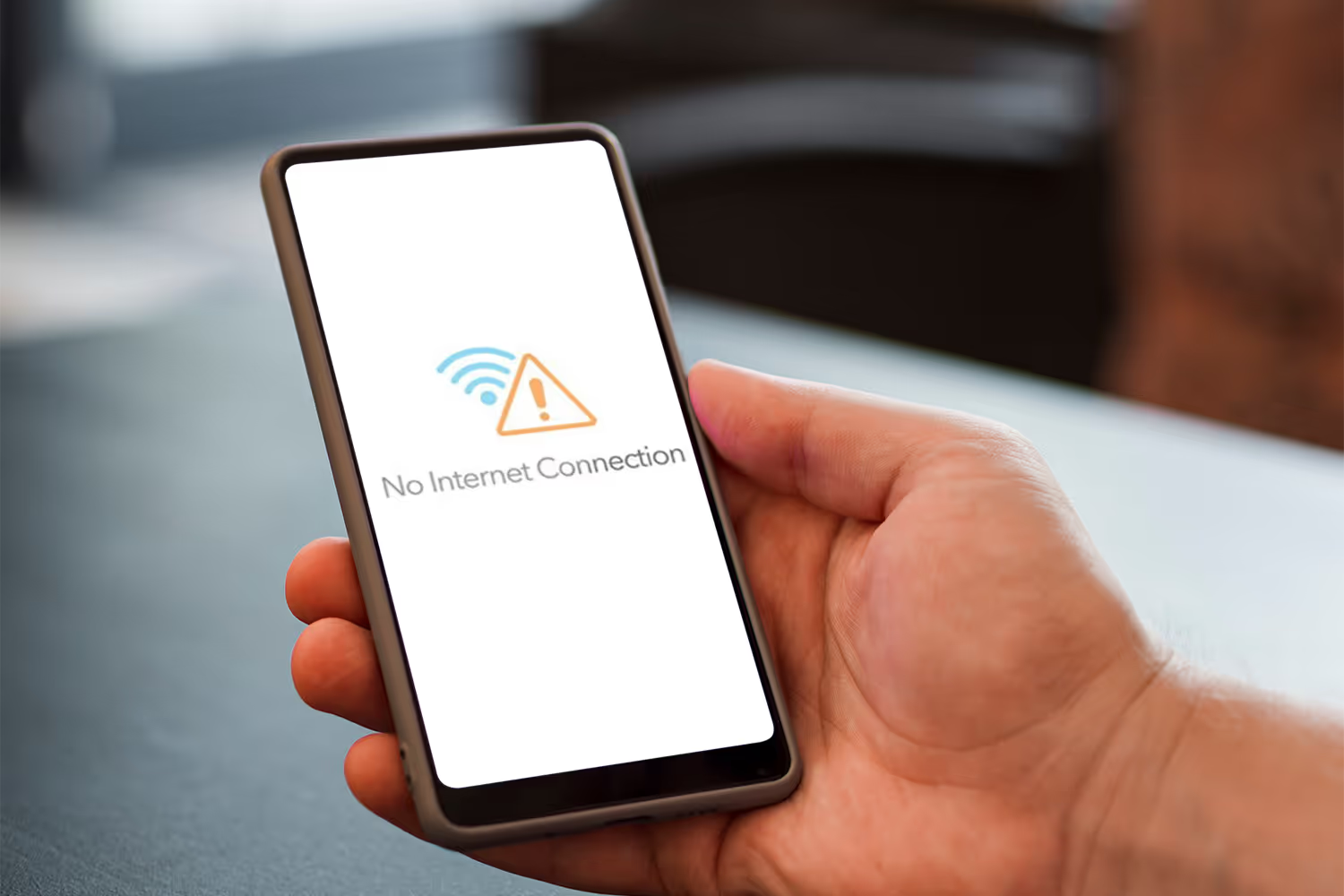The Enormous List of Telehealth Pros and Cons
This service offers many benefits to reduce current problems that prevent patients from receiving the care they need. Although, there are still some disadvantages to address as this healthcare option expands and becomes more popular. Here are some of the pros and cons of telehealth.

We know that healthcare is getting to a point where appointments don’t need to happen in-person thanks to advancements in communication technology. Within the medical industry, the services that provide virtual appointments are called telehealth.
This service offers many benefits to reduce current problems that prevent patients from receiving the care they need. Although, there are still some disadvantages to address as this healthcare option expands and becomes more popular. Here are some of the pros and cons of telehealth.

Pro: Helps Rural Areas
One of the main reasons for the recent expansion in telehealth services is due to the decline in traditional access to healthcare in rural areas.
First, from a logistics perspective, it could take hours of travel to visit a provider, and there are fewer public transportation options available.
Second, there’s a shortage of providers in these regions. Almost 20% of the US population lives in rural areas, but less than 8% of physicians practice there. This makes it difficult for rural communities to receive care and services, so they often don’t.
But this technology opens up the opportunity for them to connect with providers on a national level. If a rural patient can’t find the service they need locally, they can connect with a specialist through any device with an internet connection. This way they can still receive care, referrals, and prescriptions without having to drive hours out of the way.
Pro: Cuts Costs for Patients and Providers
Telehealth reduces costs across the board. The cost of these services is less than in-person care. A study found that the average cost of a virtual visit is $40 to $50 per visit. That’s almost four times lower than the average cost of an in-person visit according to the same study.
But the cost of in-person visits stretches beyond what the patient owes. Physically going to the doctor costs patients $43 in lost time they visit.
On the provider side, telemedicine helps cut expensive service costs, such as emergency medical services (EMS). Patients who don’t have routine checkups or have a way to get to a provider will more likely use ambulatory services or visit the hospital. This is a great service but many don’t realize how expensive it is. Riding in an ambulance could cost over $1,000 depending on the treatment they give you and how many miles they drive. This simply isn’t an option for the rural patients I mentioned in the first section.
But through telehealth, patients can consult clinicians before seeking out emergency services. This helps eliminate rash decisions to visit urgent care or emergency services for issues that a clinician could have resolved.
Pro: Reduces Spread of Illness
Telehealth services are a good way to keep sick people out of the doctor’s office. This might sound contradictory; people should go to the doctor when they are sick.
But keeping contagious people out of the doctor or hospital helps reduce the spread of illness. The patient could pick up new germs when they visit the doctor and spread their illness to other patients. But when they take their appointment virually, a physician can assess their condition and refer them to a specialist or prescribe treatment.

We’ve especially seen how important this is during a time of crisis. Specifically, the coronavirus disease 2019 (COVID-19) outbreak. With more people with this illness visiting the hospital, the disease spreads throughout the building. Hospitals only have so many beds.
Telehealth enables physicians to recommend treatment for patients from their homes. The physicians can advise those with severe symptoms to seek further treatment. It limits the ill from exposing others since they can first visit a doctor online instead of in a populated area with vulnerable people.
Those who don’t have a contagious illness may be hesitant to visit their physician for fear of catching a disease. If they have a compromised immune system, they would want to limit their contact with other germs. For instance, the elderly, pregnant women, and those with chronic illnesses require routine visits. But during seasons of illness like the flu or the COVID-19 pandemic, it’s best to avoid potential exposure.
If the symptoms for an illness are obvious and testing is available sometimes patients can forgo a doctor visit altogether. We saw this form of telehealth during the coronavirus outbreak with Virely’s government-backed COVID-19 online screening website.
But full-length appointments are still possible through telecommunication. They’re able to follow-up with their doctor for necessary assessments, but avoid others who are ill and could spread a disease to them.
Pro: Easy Follow-Up
Some visits are only for follow-up. Whether it be for post-surgery or illness, doctors may just need to check in with patients to see how they’re doing. It’s a hassle to visit the doctor for these quick appointments, especially for those recovering who need rest and can’t drive on their own.

But with a virtual visit, patients can stay in the comfort of their home for a quick follow-up assessment. The doctor can make sure their recovery is going well and decide if they need to return for more evaluation.
Pro: Time Savings
In-person appointments require more time than a virtual visit since they take up more time than the exam itself. The Harvard Medical School conducted a study on how much time patients spend on medical visits.
They found that a typical doctor visit consumes an estimate of 121 minutes for patients. This includes an average of 37 minutes in travel, 64 minutes filling out forms in the waiting room, and 20 minutes with the physician. Travel may take even more time for those in rural areas or those who rely on public transportation.
Virtual visits through telecommunication use significantly less time. They don’t require travel time, and patients can fill out forms online way before their virtual appointment. They also don’t need to spend much time waiting, but they can also be productive during this wait time from wherever they are.
Pro: Convenience
Telecommunication increases convenience. It doesn’t require travel time and it enables connection from anywhere. People don’t need to take as much time out of their day. This is helpful for patients who would otherwise need to miss work or school for a visit.

It alleviates the stress of finding transportation, costs associated with missing work, and lost time during busy schedules. It’s also convenient if patients feel too sick to drive, for parents of young children, or for the elderly who struggle to get to places on their own.
Pro: Reduces Cancellations and No-Shows
Because of the convenience, patients don’t need to cancel as often. They also are more likely to show up, decreasing no-shows. This benefits both the patient and the physician.
Patients won’t face no-show penalties, saving them money and stress over finding a new provider. Physicians won’t lose revenue from the lost appointment time that another patient could have used. This is another cost-cutter of telehealth.
With virtual options, patients can access their appointment from anywhere. There are fewer factors that would affect getting to their appointments such as transportation, illness, work, or family factors.
All that’s required to show up to a telehealth appointment is a smart device and an internet connection. Luckily, you can get a Wi-Fi connection just about anywhere and the average person owns about 15 connected devices.
Pro: Physicians Reach More Patients
A geographical hindrance with in-office visits is that doctors can’t reach as many patients within their specialty. For example, a geriatric practice won’t reach as many patients in a younger populated area. Pediatricians won’t reach as many patients in a city that’s a majority of older adults.
But telehealth allows providers to connect with their target demographic from anywhere. It won’t matter if they are in an area with a limited population. That means that it serves as an opportunity for healthcare providers to increase their patient volume, ensuring they serve enough people to keep themselves in business.
Con: Requires Internet
Telehealth requires the internet, there’s no way around it. Although you could argue that some parts of an appointment can happen over the phone, most will need some visual assessment from the clinician.

10% of Americans still don’t use the internet. These services also heavily rely on a good online connection that not everyone has. If either the patient or physician loses connection, then the entire visit comes to a halt. This could lengthen or even postpone the appointment.
Con: Requires Smart Devices
Not only do both the patient and physician need an internet connection, but they need devices that can support these services. A healthcare practice will likely have access to these devices.
We all know people within our social circle who still prefer a flip phone. Believe it or not, 19% of Americans still don’t own a smartphone.
That means that unless a patient can afford a device or borrow one from someone reliable, they simply won’t have access to any telehealth services.
Con: Generational Differences
Another reason why telehealth is expanding is due to a push from younger generations and what they value in healthcare. Technology is like their second language. With their fast-paced schedules, they value the convenience that comes with digital options.
But older generations are not as open to using these services. They struggle more with technology since they don’t use it as frequently, so they don’t understand how to use telehealth services as easily. This is an obvious barrier for elderly patients using these services, even though it would benefit them since they may struggle with getting to the doctor.

Even beyond age, we also all know someone who isn’t the most technologically-savvy person. If you don’t, think about the last time you were in a remote conference call and someone “couldn’t connect” or joined and echos filled the line. That’s who I’m talking about. Communicating vital health information to these folks would be equally as difficult.
Con: Assessment Limitations
Clinicians can only do so much when they aren’t physically with the patient. They can only assess what they see and what the patient tells them.
Doctors may need equipment to assess a patient’s condition, though this is why they may suggest they seek further treatment. This doesn’t benefit those who have difficulty getting to a doctor or the hospital. But telehealth can save them the trip in the case that they don’t need additional assessment.
In some cases there are options for patients to visit a clinic to have an assessment from a nurse, then visit with a specialist doctor virtually. This could help solve this issue as well as the difficulty of accessing devices and the internet. Although then there are still other issues that telehealth aims to solve such as time and transportation.
Con: Legislative Barriers
The federal government has yet to come to a solid conclusion on telehealth guidelines.
As a result, states have different regulations regarding the use of services and their reimbursement. This can make it difficult to access care from other areas, even though this is what telehealth tries to solve.

As the technology expands and the need continues to grow, states are considering how these rules will impact the ability to get access.
Con: Patient Data Security
Conducting appointments online adds a security risk to patient information. Online data is hackable. If a cyber-criminal gets into a patient’s account, they might have access to all of the user’s medical records.
Just like they would for in-visit appointments, clinicians need to consider ways to keep all health information safe, secure, and out of harm's way. This may require more security measures, but it’s essential for protection.
Conclusion
Telehealth services are expanding to solve many national issues in healthcare. It benefits both patients and providers to ease access to care options. But even though there are many advantages to the emerging trend, there are still negative aspects to consider.
But most healthcare experts agree that the pros for these services far outweigh the cons. Most of the negatives involved with these emerging technologies are coming up with solutions to them.
As more issues get resolved, governments update their policies and patients grow familiar with telehealth it will change the landscape of modern-day healthcare.
Emphasize your product's unique features or benefits to differentiate it from competitors
In nec dictum adipiscing pharetra enim etiam scelerisque dolor purus ipsum egestas cursus vulputate arcu egestas ut eu sed mollis consectetur mattis pharetra curabitur et maecenas in mattis fames consectetur ipsum quis risus mauris aliquam ornare nisl purus at ipsum nulla accumsan consectetur vestibulum suspendisse aliquam condimentum scelerisque lacinia pellentesque vestibulum condimentum turpis ligula pharetra dictum sapien facilisis sapien at sagittis et cursus congue.
- Pharetra curabitur et maecenas in mattis fames consectetur ipsum quis risus.
- Justo urna nisi auctor consequat consectetur dolor lectus blandit.
- Eget egestas volutpat lacinia vestibulum vitae mattis hendrerit.
- Ornare elit odio tellus orci bibendum dictum id sem congue enim amet diam.
Incorporate statistics or specific numbers to highlight the effectiveness or popularity of your offering
Convallis pellentesque ullamcorper sapien sed tristique fermentum proin amet quam tincidunt feugiat vitae neque quisque odio ut pellentesque ac mauris eget lectus. Pretium arcu turpis lacus sapien sit at eu sapien duis magna nunc nibh nam non ut nibh ultrices ultrices elementum egestas enim nisl sed cursus pellentesque sit dignissim enim euismod sit et convallis sed pelis viverra quam at nisl sit pharetra enim nisl nec vestibulum posuere in volutpat sed blandit neque risus.

Use time-sensitive language to encourage immediate action, such as "Limited Time Offer
Feugiat vitae neque quisque odio ut pellentesque ac mauris eget lectus. Pretium arcu turpis lacus sapien sit at eu sapien duis magna nunc nibh nam non ut nibh ultrices ultrices elementum egestas enim nisl sed cursus pellentesque sit dignissim enim euismod sit et convallis sed pelis viverra quam at nisl sit pharetra enim nisl nec vestibulum posuere in volutpat sed blandit neque risus.
- Pharetra curabitur et maecenas in mattis fames consectetur ipsum quis risus.
- Justo urna nisi auctor consequat consectetur dolor lectus blandit.
- Eget egestas volutpat lacinia vestibulum vitae mattis hendrerit.
- Ornare elit odio tellus orci bibendum dictum id sem congue enim amet diam.
Address customer pain points directly by showing how your product solves their problems
Feugiat vitae neque quisque odio ut pellentesque ac mauris eget lectus. Pretium arcu turpis lacus sapien sit at eu sapien duis magna nunc nibh nam non ut nibh ultrices ultrices elementum egestas enim nisl sed cursus pellentesque sit dignissim enim euismod sit et convallis sed pelis viverra quam at nisl sit pharetra enim nisl nec vestibulum posuere in volutpat sed blandit neque risus.
Vel etiam vel amet aenean eget in habitasse nunc duis tellus sem turpis risus aliquam ac volutpat tellus eu faucibus ullamcorper.
Tailor titles to your ideal customer segment using phrases like "Designed for Busy Professionals
Sed pretium id nibh id sit felis vitae volutpat volutpat adipiscing at sodales neque lectus mi phasellus commodo at elit suspendisse ornare faucibus lectus purus viverra in nec aliquet commodo et sed sed nisi tempor mi pellentesque arcu viverra pretium duis enim vulputate dignissim etiam ultrices vitae neque urna proin nibh diam turpis augue lacus.


.avif)

